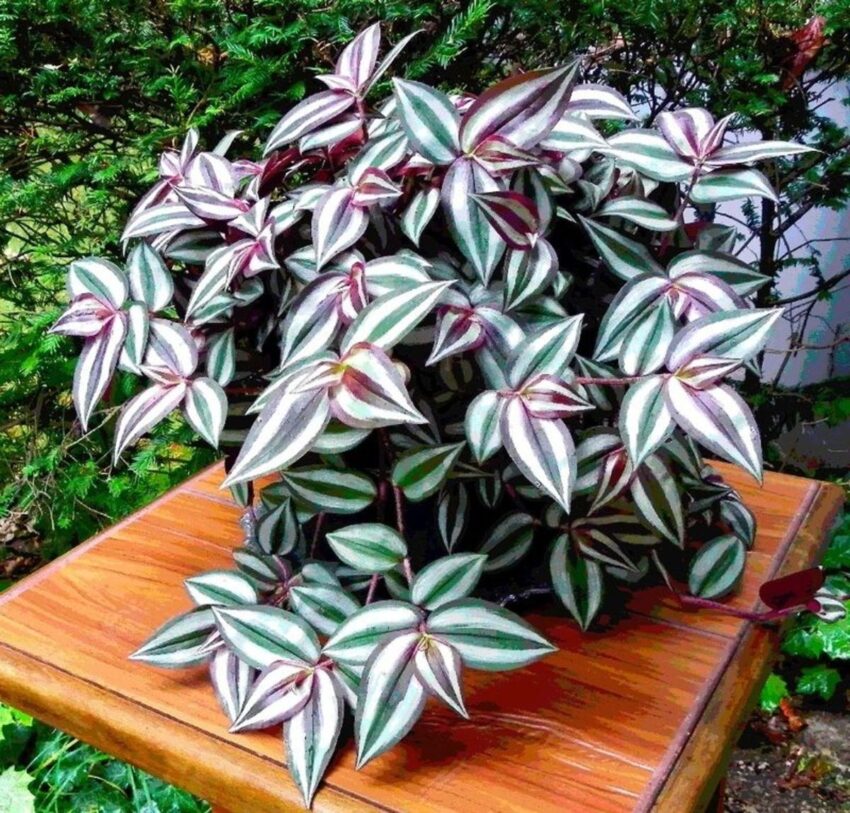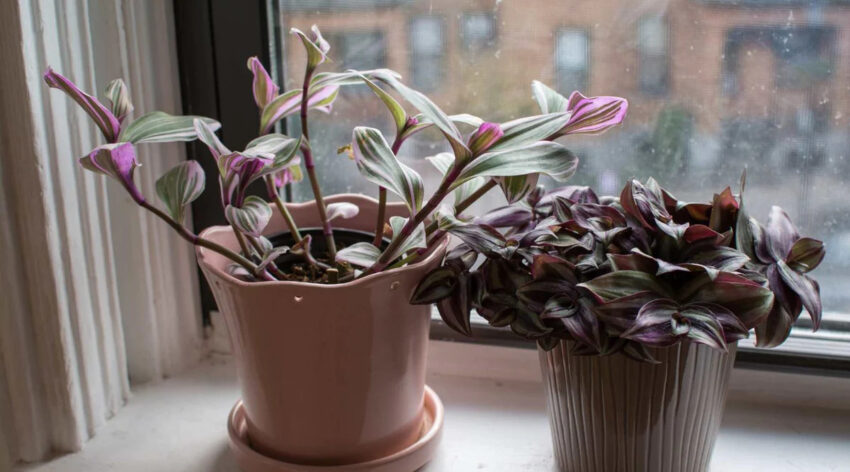
14 May Aspects of Wandering Jew Plant Care
The Wandering Jew plant, scientifically known as Tradescantia zebrina, is a popular and visually striking houseplant that is cherished for its vibrant foliage and ease of care. If you’re a plant enthusiast looking to add a touch of uniqueness to your indoor garden, the Wandering Jew plant might be the perfect choice for you. In this article, we will explore the various aspects of caring for a Wandering Jew plant and help you ensure its health and longevity. The article is contributed by Begardenly.
What is a Wandering Jew Plant?

Image source: Google.com
The Wandering Jew plant is a member of the spiderwort family and is native to Mexico and Central America. It gets its intriguing name from the Biblical legend, which tells the story of a Jewish man who was cursed to wander the earth forever. The plant’s trailing stems and rapid growth habit evokes a sense of perpetual wandering.
One of the distinguishing features of the Wandering Jew plant is its colorful leaves. The leaves are typically green or purple, with silver stripes or markings. Some popular varieties include Tradescantia zebrina, Tradescantia fluminensis, and Tradescantia pallida. Each variety offers its unique charm and beauty. Like also: HOW DO YOU REVIVE A DYING LAUREL
Popular Varieties of Wandering Jew Plants
- Tradescantia zebrina: Also known as the Inch Plant or Wandering Jew, this variety has striking purple undersides on its leaves, which contrast beautifully with the green tops.
- Tradescantia fluminensis: Commonly referred to as the Small-Leaf Spiderwort, this variety features small, lance-shaped leaves with vibrant green coloration.
- Tradescantia pallida: Known as the Purple Heart or Purple Queen, this variety boasts deep purple foliage that adds a touch of drama to any space.
Wandering Jew Plant Care Guide
Light Requirements
Wandering Jew plants thrive in bright, indirect light. They enjoy a few hours of direct sunlight each day but can also tolerate lower light conditions. Placing them near a window or in a room with ample natural light will ensure optimal growth and vibrant leaf coloration.
Temperature and Humidity
These plants prefer moderate temperatures ranging from 60°F to 85°F (15°C to 29°C). They can withstand slightly cooler temperatures but are sensitive to frost. As for humidity, Wandering Jew plants appreciate higher humidity levels. If the air in your home tends to be dry, consider using a humidifier or placing the plant on a pebble tray filled with water to increase humidity around it.
Watering Needs
When it comes to watering, it’s essential to strike a balance. Wandering Jew plants like to be evenly moist but not overly saturated. Water them when the top inch of the soil feels dry to the touch. Ensure proper drainage by using a well-draining potting mix and a container with drainage holes.
Soil and Fertilizer
A well-draining soil mix is crucial for Wandering Jew plants. A combination of peat moss, perlite, and potting soil works well. Additionally, these plants benefit from regular fertilization during the growing season. Use a balanced, water-soluble fertilizer diluted in half according to the package instructions. Fertilize the plant once a month, providing it with essential nutrients for healthy growth.
Pruning and Propagation
Regular pruning helps maintain the shape and size of your Wandering Jew plant. Trim back leggy stems and remove any dead or yellowing leaves to encourage new growth. You can also propagate your Wandering Jew plant easily. Simply take stem cuttings, remove the lower leaves, and place them in a jar of water or moist potting soil. Within a few weeks, roots will develop, and you can transplant the cuttings into separate containers.
Common Pests and Diseases
While Wandering Jew plants are generally resistant to pests and diseases, they can still encounter a few common issues. Keep an eye out for spider mites, aphids, and mealybugs. If you notice any signs of infestation, treat the plant with an organic insecticidal soap or neem oil. Overwatering can lead to root rot, so it’s important to avoid waterlogged conditions and provide proper drainage.
Wandering Jew Plant Benefits
Apart from their aesthetic appeal, Wandering Jew plants offer several benefits to indoor environments. They help purify the air by removing toxins and volatile organic compounds, improving overall air quality. Additionally, their lush foliage adds a touch of greenery and visual interest to any space, creating a calming and inviting atmosphere.
Decorating with Wandering Jew Plants
Due to their trailing growth habit, Wandering Jew plants are ideal for hanging baskets, shelves, or as trailing accents in plant arrangements. Their vibrant foliage adds a pop of color to any room, and they can be combined with other houseplants to create stunning displays. Whether you prefer a modern, minimalist look or a lush, jungle-like setting, Wandering Jew plants can be incorporated seamlessly into your decor.
Conclusion
Caring for a Wandering Jew plant is a rewarding experience that allows you to enjoy the beauty of nature within the confines of your home. With their colorful leaves, easy maintenance, and air-purifying qualities, these plants are a wonderful addition to any indoor garden. By following the care tips outlined in this article, you can ensure the health and vitality of your Wandering Jew plant for years to come.

Sorry, the comment form is closed at this time.